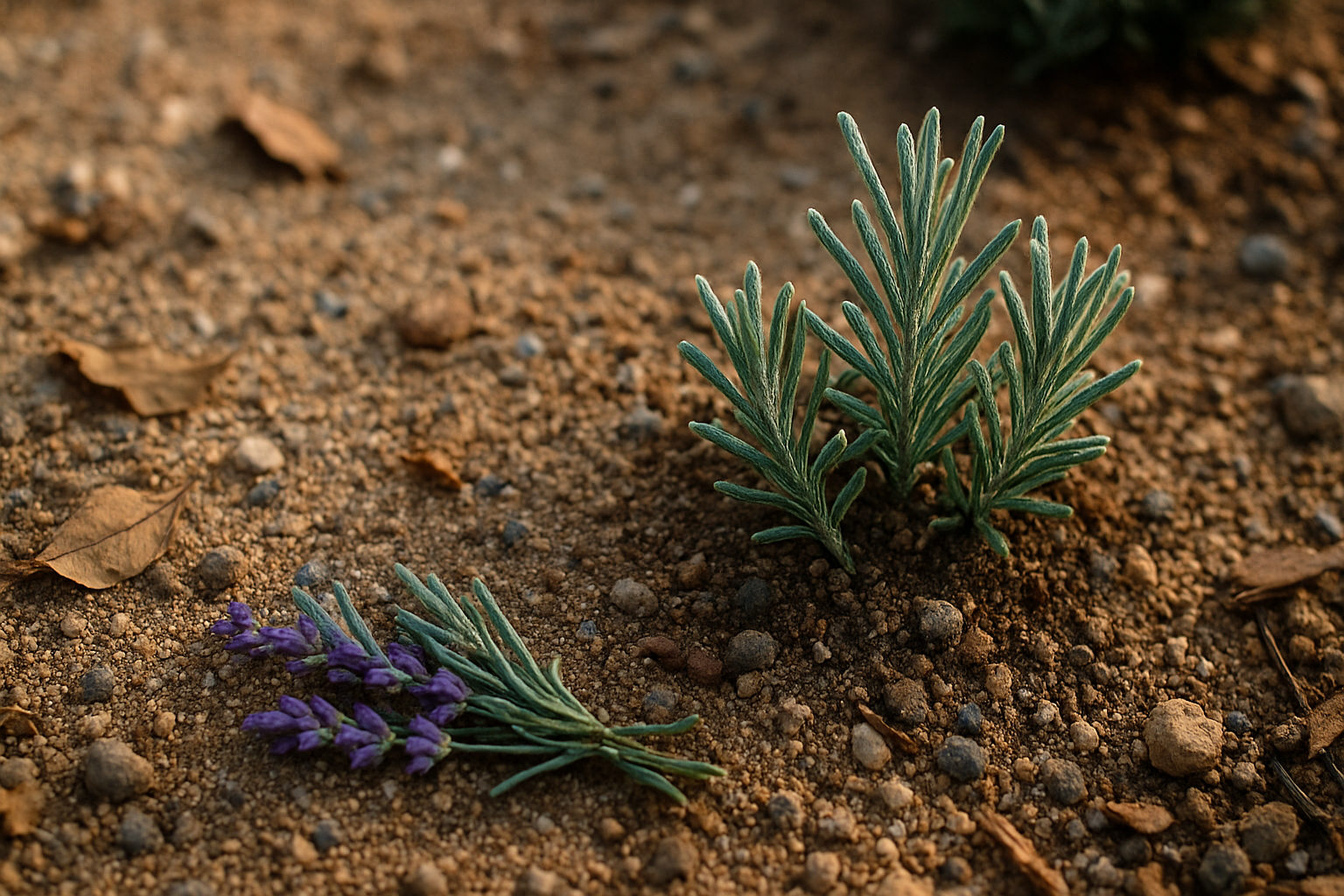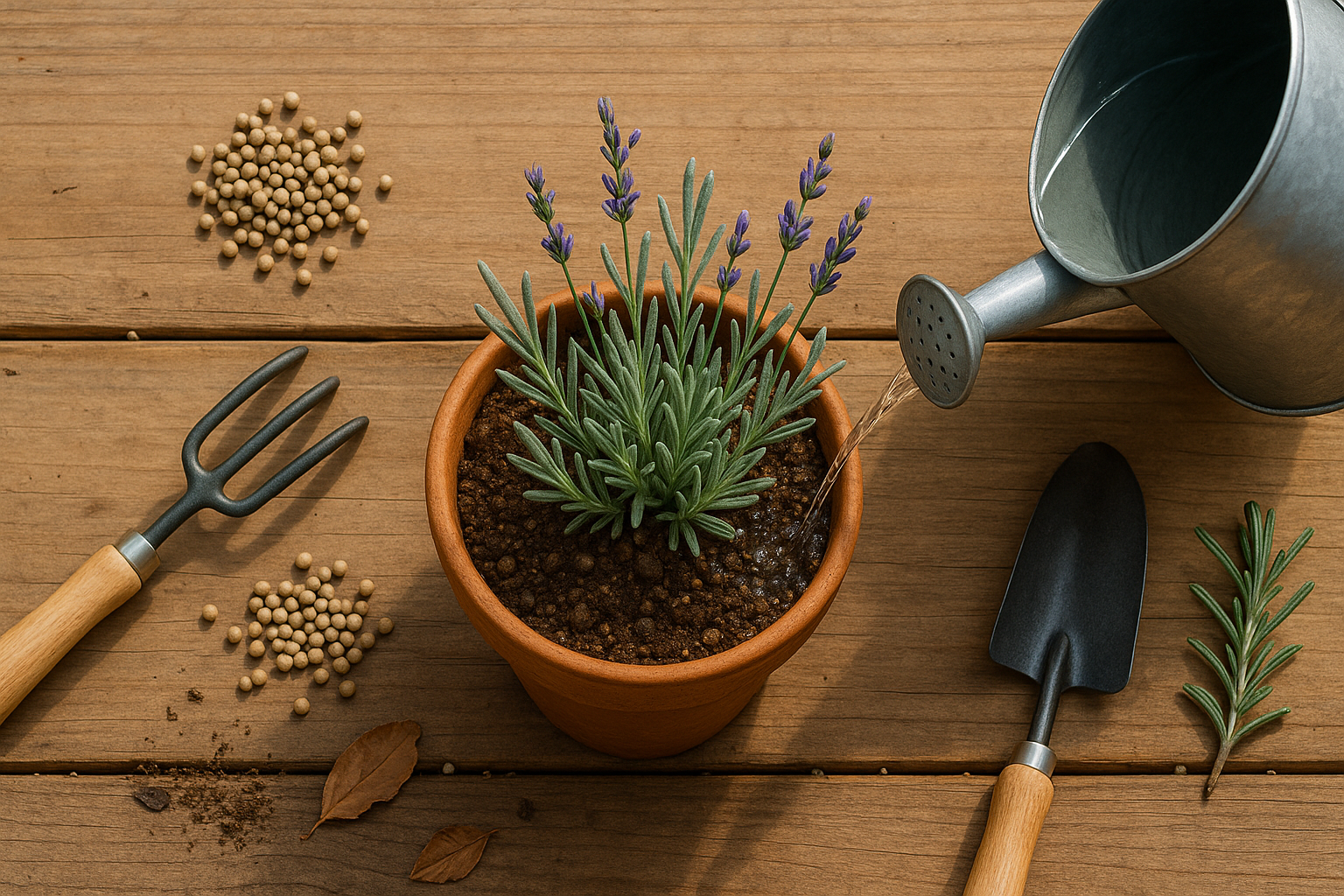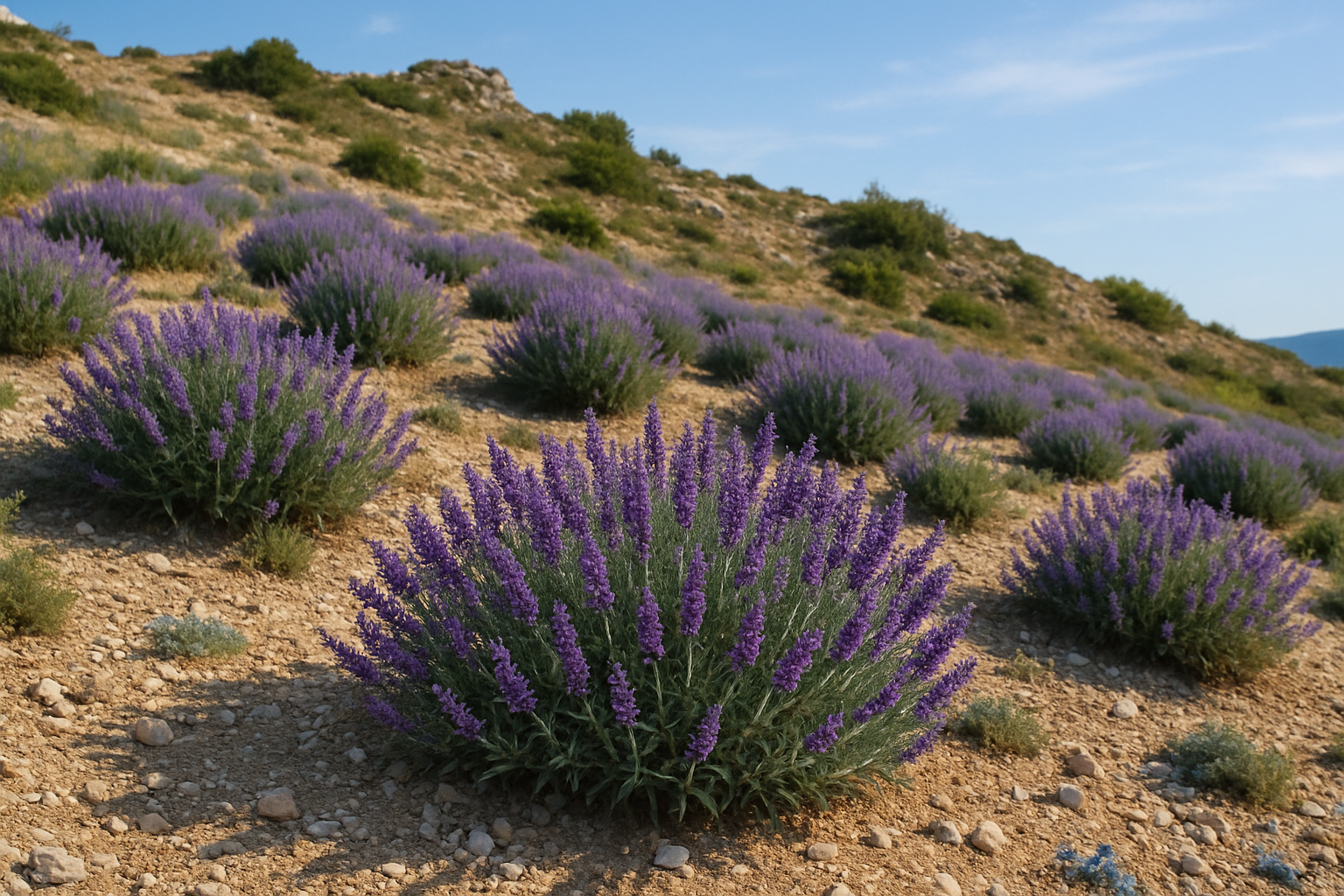Introduction
Fertilizing lavender is a topic that often comes up among gardeners, even though lavender is celebrated for being a hardy, popular, and low-maintenance plant. Many people love its calming scent, beautiful blooms, and impressive ability to grow in less-than-ideal soils with little fuss. Still, questions about whether to fertilize, and if so, how and when, are surprisingly common.
After all, while lavender’s reputation suggests it can thrive on neglect, certain growing conditions and climates might leave gardeners wondering if some extra nourishment would encourage even better growth or fuller blooms. The truth is, there’s a fine balance to be struck—lavender roots can be sensitive to overfeeding, and using the wrong fertilizer or applying it at the wrong time can do more harm than good.
In this article, we’ll clear up confusion by showing what really works when it comes to fertilizing lavender, sharing clear, effective tips based on expert advice and real-world experience. We’ll also uncover common mistakes—like using rich, fast-release fertilizers or feeding too often—that can actually hinder lavender’s health. Whether you’re growing lavender for its fragrance, beauty, or pollinator appeal, you’ll finish this guide with proven strategies for supporting lush, vibrant plants without unnecessary risks.
Understanding Lavender’s Natural Growing Conditions

Lavender traces its roots to the sun-drenched hillsides of the Mediterranean, where it thrives in rocky, well-drained soils under intense, unrelenting sunlight. In these wild habitats, lavender endures harsh conditions that most garden plants would struggle to survive—think stony ground low in nutrients and regular exposure to hot, dry winds.
Because of its adaptation to this environment, lavender’s needs in your garden differ drastically from typical ornamental plants. Many gardeners naturally assume that nutrient-rich soil and regular feeding are necessary for robust growth, but for lavender, the opposite is true. Too-rich soil or frequent fertilizing can cause excess leafy growth at the expense of blooms, dilute its signature fragrance, and create conditions ripe for fungal root rot. Over time, these mistakes can shorten your plant’s lifespan.
If you want abundant lavender flowers and a strong aroma, mimic its native conditions: choose a well-drained, sandy or gravelly soil mix, avoid heavy clay and topsoil amendments, and hold back on fertilizer. Water sparingly, allowing soil to dry out between rains. This not only keeps your plant healthy but ensures it produces the vibrant, aromatic blooms lavender is prized for.
A good rule of thumb: if you’re not sure, lean toward neglect. For instance, a gardener in France’s Provence region might grow lush, fragrant lavender with nothing but sun, gravel, and the occasional pruning.
In summary, understanding lavender’s Mediterranean origins is key to unlocking its full potential in your own backyard—less really can be more when it comes to this resilient, sun-loving herb.
Does Lavender Need Fertilizer? Separating Fact from Myth
Many people assume that all garden plants, including lavender, need regular fertilizer to thrive, but this is a gardening myth that doesn’t apply equally to every plant. In fact, lavender is exceptionally well adapted to grow in low-nutrient soils.
For established lavender planted in the ground, especially in naturally well-draining or slightly rocky soil, adding fertilizer can do more harm than good. This Mediterranean native is accustomed to lean conditions, and too much feeding can quickly lead to lush, floppy growth and fewer blooms. Over-fertilized lavender often looks overly green and bushy, produces poor floral displays, and becomes more susceptible to disease and winter dieback.
However, there are certain cases when light feeding is helpful. If your soil is extremely sandy, depleted, or you notice yellowing leaves and stunted growth—classic signs of nutrient deficiency—it may be worth incorporating a small amount of slow-release, balanced fertilizer in early spring. Likewise, lavender grown in containers can benefit from occasional feeding since potted soil loses nutrients more rapidly with watering.
When fertilizing, always err on the side of too little rather than too much; a single annual application is far better than frequent doses. Watch your plants: healthy lavender should have silvery-green foliage, compact growth, and plenty of blooms. If you see soft, overly vigorous green growth, reduced flowering, or leaf browning at the edges, you may have gone overboard with fertilizer.
In summary, lavender is a plant that typically rewards a minimalist approach—let its Mediterranean roots guide your hand and only supplement when clearly necessary.
What Types of Fertilizer Work Best for Lavender?
Lavender thrives when given a gentle touch with fertilizer, preferring low-nitrogen, balanced formulas that mimic its native Mediterranean soils. Synthetic fertilizers with NPK ratios like 5-5-5 or 7-9-5 provide the right nutrients without overwhelming the plant. Too much nitrogen encourages lush leaves at the expense of fragrant blooms and can even make lavender more susceptible to diseases.
For those who prefer organic gardening, well-composted manure or homemade compost works wonderfully, delivering slow-release nutrients that nourish the plant steadily. Specialized organic blends formulated for Mediterranean herbs or lavender, often available at garden centers, can also be mixed into the soil in early spring for a healthy start.
If your soil is naturally clay-heavy or tends to retain water, add amendments like coarse sand or small gravel to improve drainage—lavender hates soggy roots. Similarly, a sprinkle of garden lime can help raise soil pH to lavender’s preferred alkaline range.
Avoid the temptation to use high-nitrogen or fast-release fertilizers, which may seem like a quick fix but often lead to weak, floppy growth and reduced flowering. A good rule of thumb is to fertilize sparingly: for mature plants, a single spring application of an appropriate fertilizer or organic material is usually enough. Homemade compost teas or worm castings can also be added in moderation.
By choosing the right fertilizers and soil amendments, you’ll help your lavender produce abundant, aromatic blooms year after year, with minimal risk of problems caused by overfeeding or poorly drained soils.
When and How to Fertilize Lavender

Fertilizing lavender is a simple yet important step to keep your plants healthy and vibrant, but timing and technique matter. The best time to fertilize lavender is once each year—early spring, just before new growth appears. This gives your plant the nutrients it needs for a strong start without risking excessive leafy growth, which can reduce blooming.
When applying fertilizer, use a balanced, slow-release formula or a low-nitrogen option, and always spread it evenly around the root zone rather than placing it right up against the stems, which can lead to stem burn or rot.
For lavender growing in the ground, less is often more: a handful of fertilizer gently raked into the soil will suffice, as too much feeding can actually harm these Mediterranean natives.
Potted lavender needs a bit more attention since nutrients can leach from containers; use a diluted liquid fertilizer every four to six weeks during the growing season, but avoid overfeeding, as this encourages weak, floppy growth.
Most importantly, water your lavender thoroughly after feeding to help distribute nutrients, but never let the soil stay soggy—good drainage is essential to prevent root rot. Let the top inch of soil dry out before watering again, and remember that a light touch with both fertilizer and water will keep your lavender happy, healthy, and blooming all summer long.
Common Mistakes to Avoid (And What Doesn’t Work)
Many gardeners unintentionally harm their lavender by falling into common fertilization traps. One of the biggest mistakes is over-fertilizing, which can lead to lush, floppy growth with fewer flowers and increased vulnerability to pests and diseases. Lavender thrives in lean, well-drained soil and actually resents excess nutrients—especially high-nitrogen fertilizers.
Although it might be tempting to treat lavender like other flowering plants, a generous scoop of all-purpose fertilizer or repeated doses throughout the growing season can backfire, resulting in weak plants with diminished fragrance and color.
Another frequent error is fertilizing during fall or late winter, which can trigger new growth just before cold weather, leaving the plant exposed to frost damage.
Some well-meaning “hacks” found online, like sticking to a strict, frequent feeding schedule or using compost-heavy mulches, are actually counterproductive for lavender. These can suffocate roots or promote fungal disease in this Mediterranean native, which evolved in rocky, nutrient-poor soils.
If your lavender shows signs of over-fertilization—yellowing or wilting leaves, stunted growth, or excessive softness—stop fertilizing immediately and soak the soil deeply to leach away excess nutrients. Prune away any damaged portions and hold off on any fertilizer for at least six months, allowing the plant to recover naturally.
Quick Reference
- Recommended: Feed sparingly with low-nitrogen fertilizer in early spring, plant in well-drained soil, skip regular feeding, water only when dry.
- Common Mistakes: Frequent feeding, high-nitrogen products, fertilizing in fall/winter, heavy mulching.
Keeping these best practices in mind will help your lavender thrive and bloom beautifully, year after year.
Summary & Key Takeaways
When it comes to fertilizing lavender, less truly is more. This resilient herb naturally thrives in low-nutrient, well-draining soils, so overfeeding can actually do more harm than good. Giving your lavender just one light feeding each spring—using a balanced, slow-release fertilizer or a small amount of compost mixed into the soil—is often all it needs for healthy growth and vibrant blooms.
Before you reach for the fertilizer, take a moment to assess your soil. If your lavender is planted in rich or amended soil and looks strong, it may not need any extra nutrients at all. Watch for signs of stress, like yellowing leaves or lack of flowering, but don’t assume fertilizer is the answer unless you know the soil is depleted.
Remember, lavender is a low-maintenance plant designed to flourish with a little “tough love.” Smart, infrequent feeding not only keeps your plants healthy but also helps produce the fragrant flowers and silvery foliage that make lavender so popular in gardens. By keeping a close eye on your soil and avoiding the temptation to over-fertilize, you’ll ensure your lavender remains robust, beautiful, and easy to care for.
